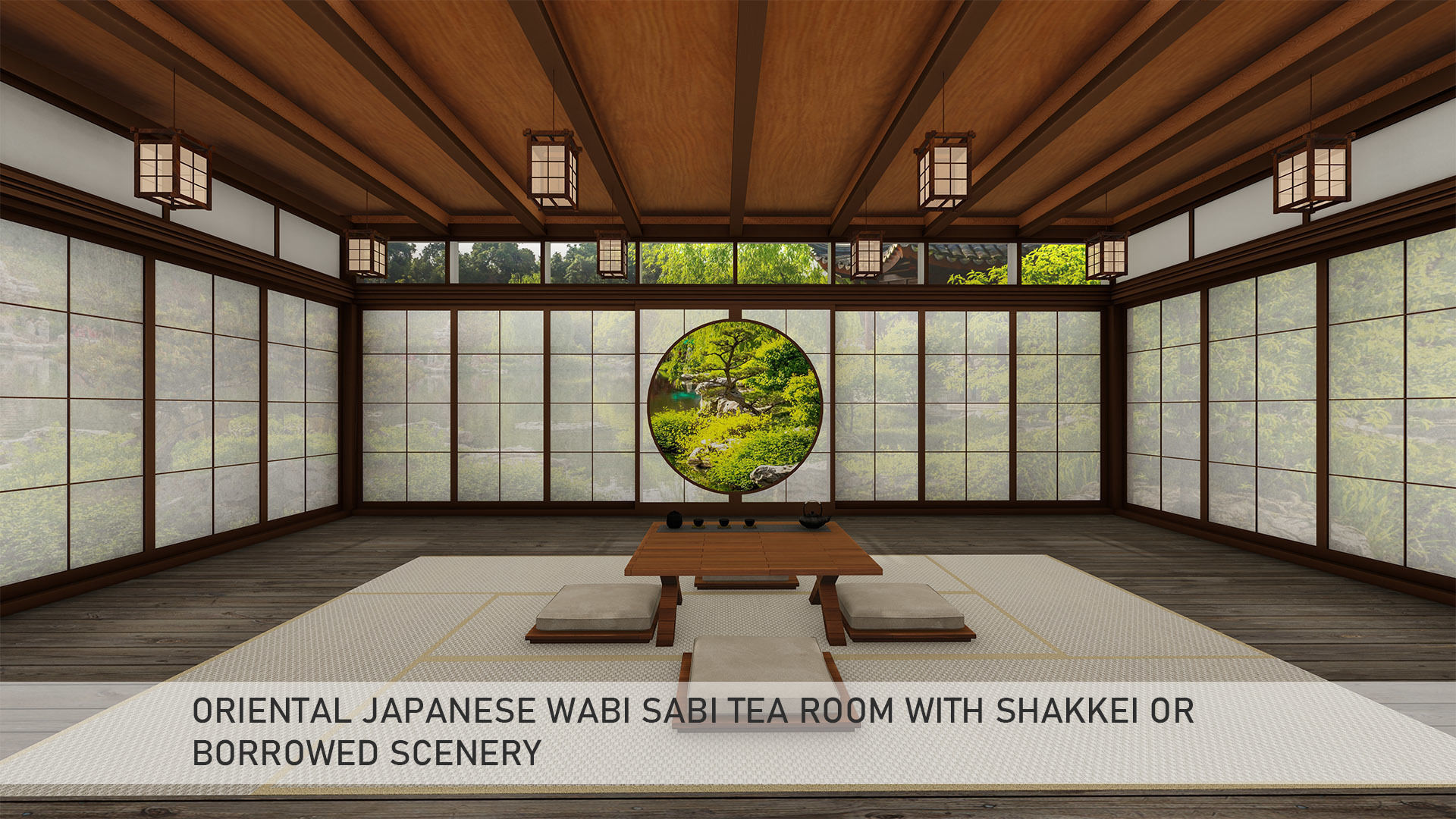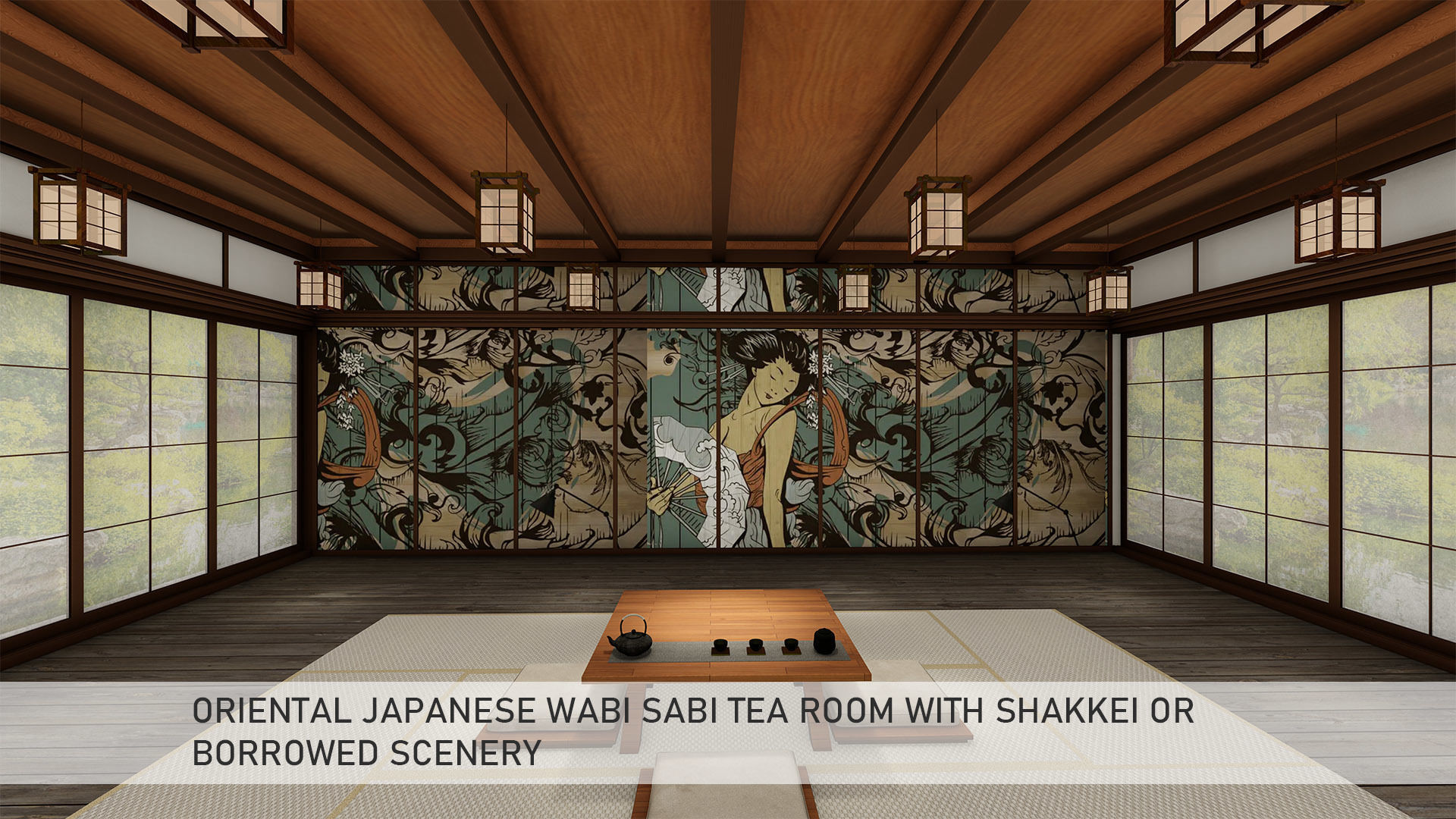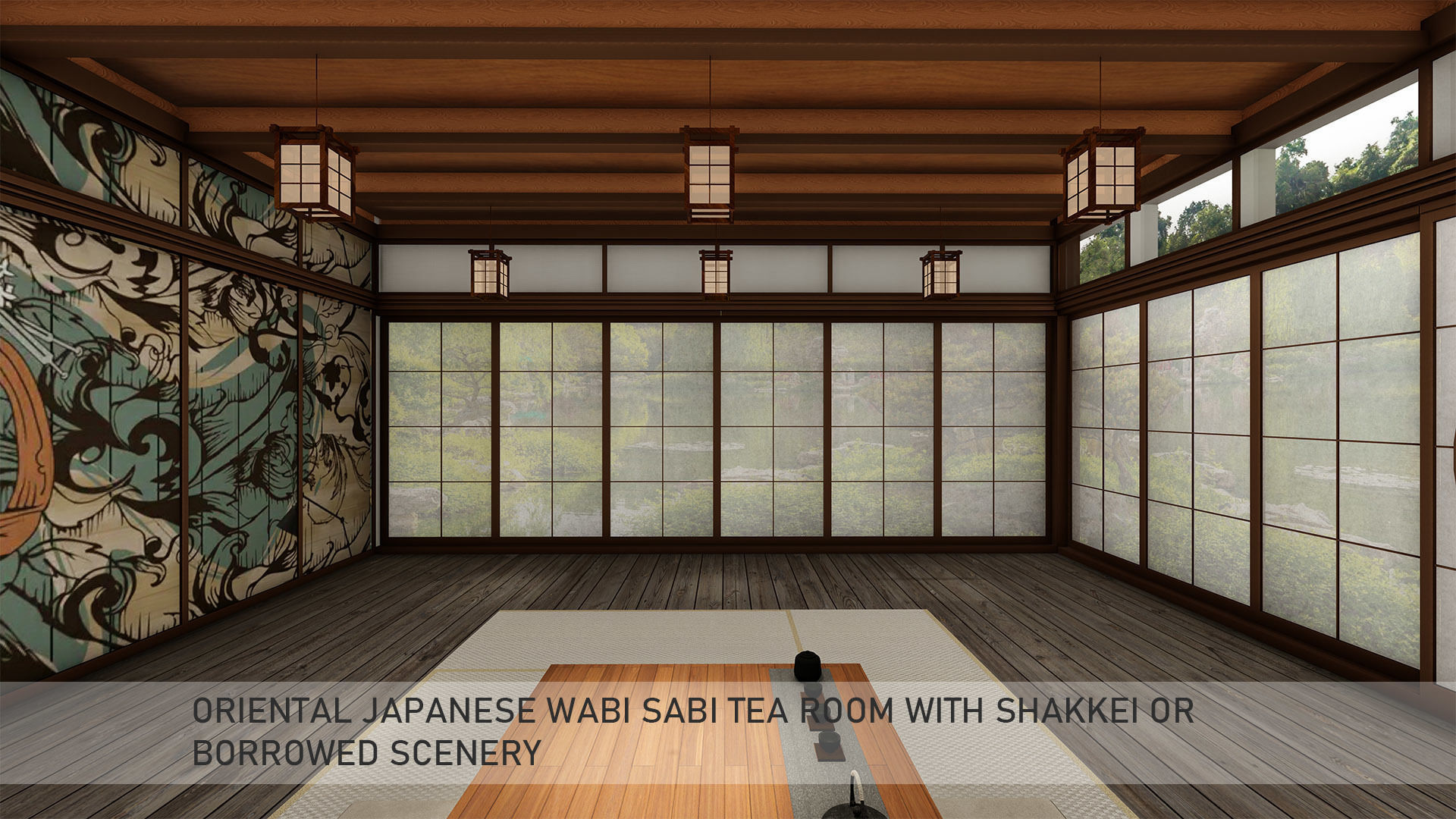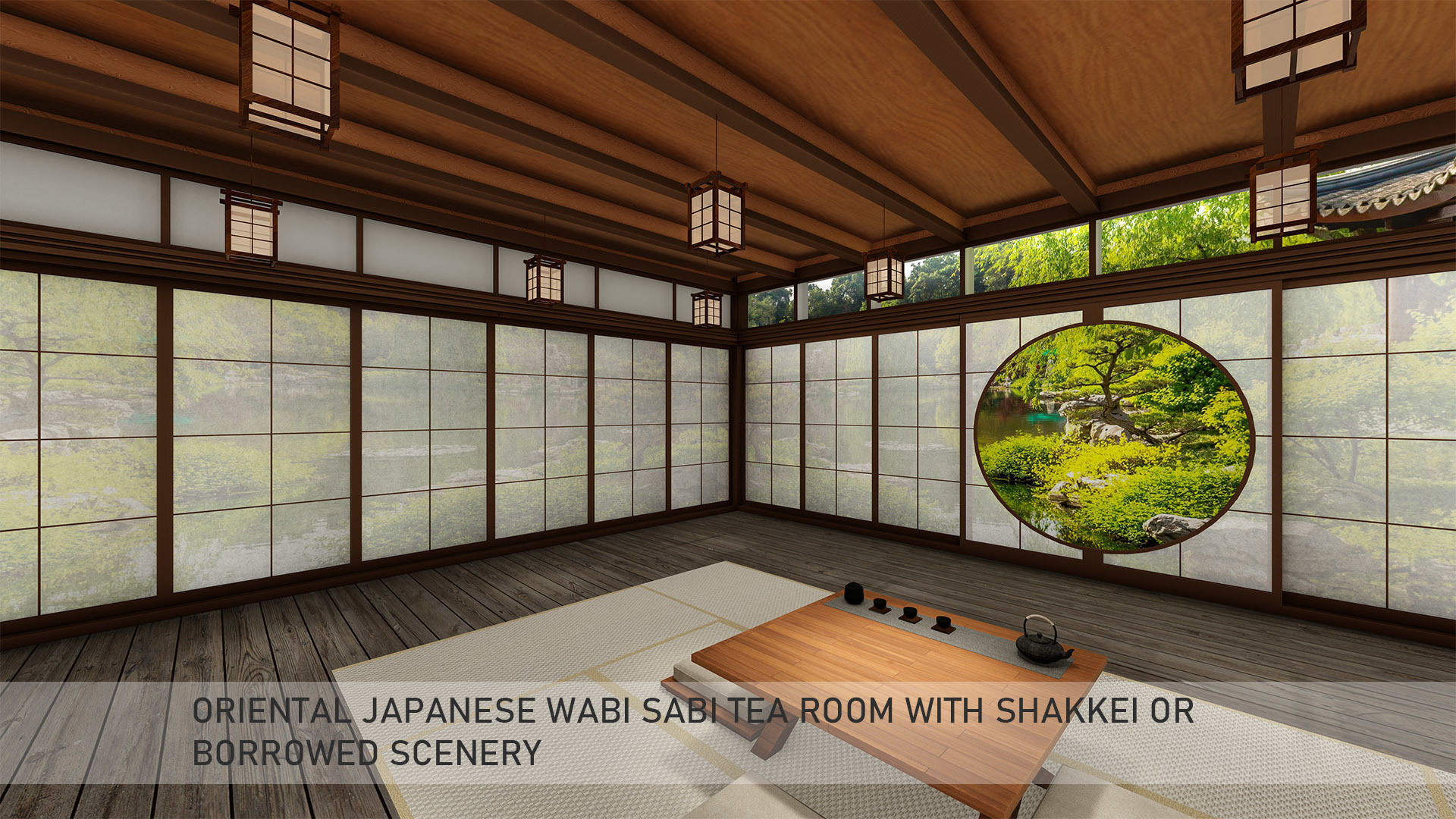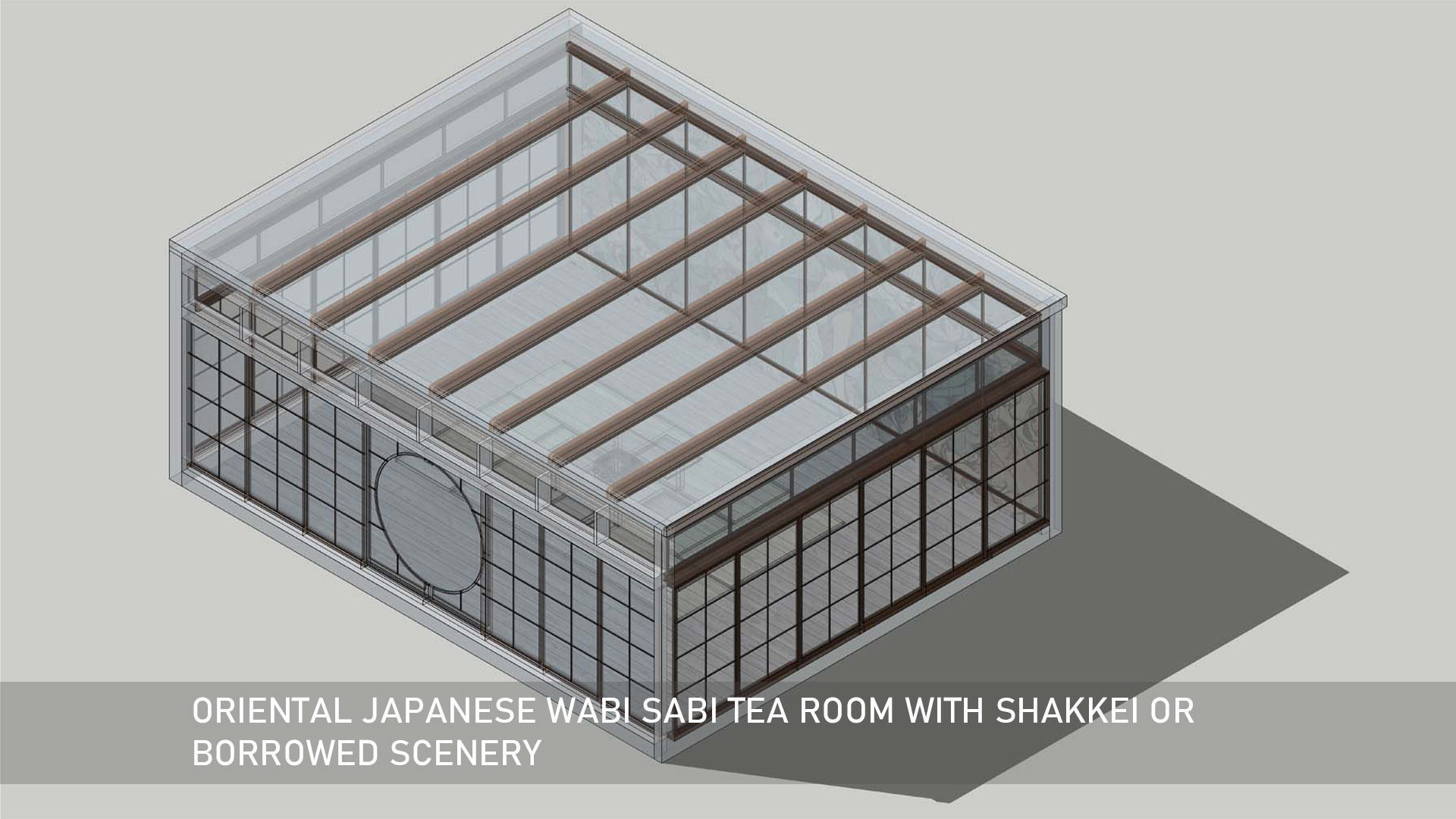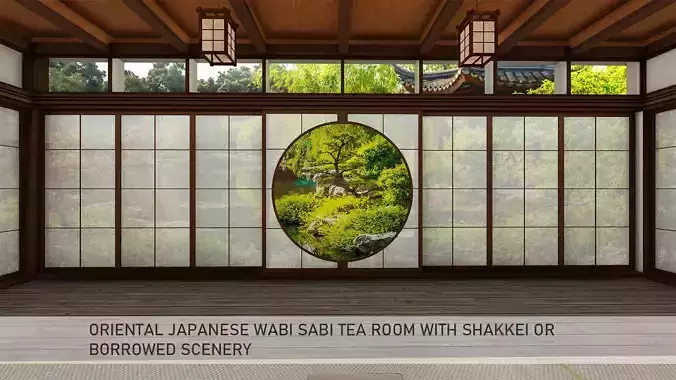
Oriental Japanese wabi sabi tea room with shakkei 3D model
Oriental Japanese wabi sabi tea room with 'shakkei' which means borrowed scenery and traditional Maiko wall mural, shoji screen and kumiko lantern. The design theme of the tea room is traditional Japanese with shoji screen sliding windows, doors and minimal woodwork panel. There is recessed seating for 4 people.
The word 'wabi-sabi' comes from Buddhist teachings; of the three marks of existence: impermanence, suffering, and emptiness. Previously Japanese tea ceremonies were about lavish and luxury. Ever since the 16th century, the tea ceremony masters started finding beauty in rugged appearance and rustic simplicity. This change in belief eliminated grand tea rooms and replaced it with plain objects found in nature.
In this thatched hut there ought not to be a speck of dust of any kind; both master and visitors are expected to be on terms of absolute sincerity; no ordinary measures of proportion or etiquette or conventionalism are to be followed.
― Sen no Rikyu
3D MODEL INFORMATION:
- Native format of model is SketchUp 2021.
- Scale of .skp is feets and inches
- Rendering done in Lumion 11.
- Model components are well grouped.
- All skp and Lumion components are well grouped and organized
- All files are free from any protection/encryption.
- The render settings are easy to follow and reuse.
- No special plugin needed to open the scene.
FILES INCLUDED:
- Lower versions of sketchup formats 2007
- Higher versions of sketchup formats 2017, 2021
- Lumion LS 11 format with all materials and render settings
- OBJ, and other 3D model files.
- Materials included

